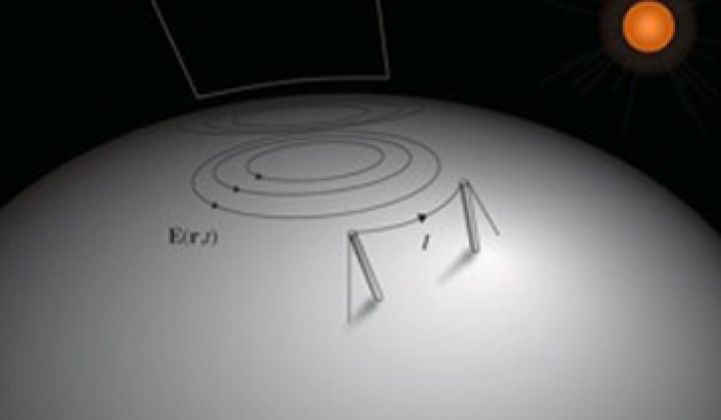I joked with Antti Pulkkinen, the director of NASA's new Solar Shield project, that if he needs a space weather girl, I would happily do it!
The idea of broadcasting space weather forecasts the same way that the meteorologists on the Weather Channel accurately predict the chance of rain or sunshine might not be so far-fetched after all.
Really bad space weather could really destroy the grid. While the chance of that happening is low, the worst case scenario might seem like a scene from the movie Armageddon. It's hard to forget how the solar storms have destroyed the power grid before.
On March 13 and 14, 1989, a geomagnetic storm destroyed the Hydro Quebec system. In just 92 seconds, the disturbance caused the entire Quebec Interconnection to break down. Six million people lost power for nine hours.
Fortunately, 83 percent of the customers soon got their power back. But there were 200 other places along the nation's bulk power supply that were affected over the course of the next day, from Mississippi to Colorado to Washington state; indeed, two transformers in England were damaged. The 1989 storm went down in history as the third largest storm ever, according to NOAA geomagnetic storm indices.
The geomagnetically induced current can destroy the power grid. If a coronal mass ejection travels all the way to Earth and causes a geomagnetic storm, it can cause a disturbance that would induce such currents in the North American bulk power system and other high-voltage systems around the world.
A major solar storm could wipe out the bloodline of our energy supply. First, there would be no cell phones, access to lights, and the internet would be interrupted. Toilets could stop working. The water supply would run dry and then hunger would likely set in. Banking, transportation, emergency services and oil/gas would all shut down.
Basically, society as we know it would collapse in a matter of days. Obviously, as with any disaster scenario, we'd like to be prepared for it.
Solar Shield will forecast how the sun will impact the North American high voltage transmission power system.
"We are sort of living in a time of transition now. We are using large-scale physical models to forecast space weather, the same way the Weather Channel did decades ago," he said.
Space weather effects manmade technology in space and on the ground and can have a real impact on our communication, satellite, or phone connections. Disturbances in the upper atmosphere create induced current and it is this extra current that can damage the transformer. It can cause overheating or cause certain parts to melt.
"We want to predict how the solar bursts will cause disturbances," said Pulkkinen.
Space weather forecasts will come from a number of NASA spacecrafts that image the sun and make observations from space. The NASA data will be used to create simulations.
Right now, we are at the bottom of the 11-year solar cycle. The solar maximum should happen in 2014. During a solar storm, a coronal mass ejection hurls towards Earth, where it causes a disturbance in the magnetic field.
"It's like a hurricane. When it hits, it can permanently damage high power transmission lines," said Pulkkinen. It can destroy orbiting spacecrafts, make radio communication difficult for airlines and disturb satellite communications.
"The power grid is more sensitive than ever before," said Pulkkinen. Since the dawn of the Space Age, the number of wires linking the nation's high-voltage power lines continues to increase.
In the future, the Solar Shield could predict the location of the disturbances, Pulkkinen said. However, the project is in the experimental phase. He is currently working with a couple of utilities, but he wouldn't disclose which ones.
Solar Shield will soon figure out which transformers will be impacted the most by space weather.



